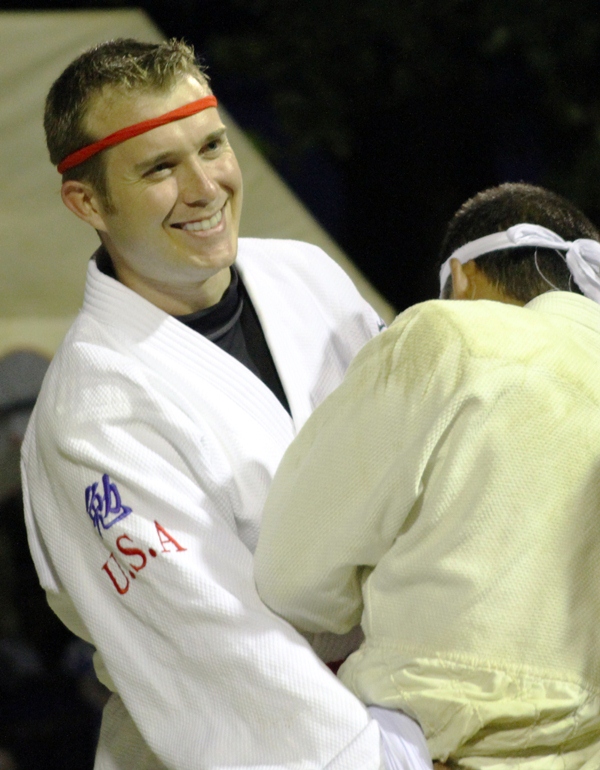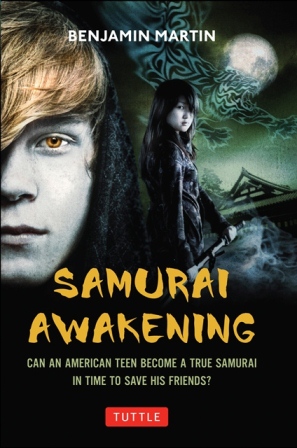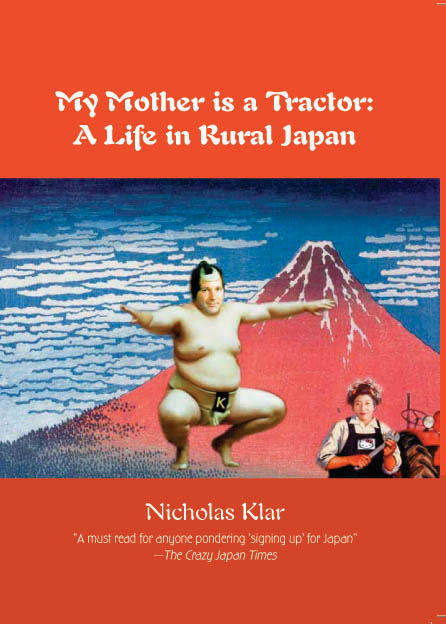WIT Life #215: More Yakusho Koji greatness
WIT Life is a periodic series written by professional Writer/Interpreter/Translator Stacy Smith (Kumamoto-ken CIR, 2000-03). She starts her day by watching Fujisankei’s newscast in Japanese, and here she shares some of the interesting tidbits and trends together with her own observations.
Looks like it’s been exactly a month since I’ve written here, and we have already entered 実りの秋・食欲の秋 (minori no aki, shokuyoku no aki) or season of harvest, season of hearty appetites. Leaves are started to turn their lovely colors and there is a nice chill in the air most mornings and nights, which makes me wish there was a nearby onsen to soak in…
On the plane on the way back from a recent European vacation I was able to catch Yakusho Koji‘s わが母の記 (waga haha no ki), or Chronical of My Mother. This film was featured in this year’s Japan Cuts, but I was not around when it screened so I was glad to have the chance to make up for it. Based on an autobiographical novel by Yasushi Inoue, it tells the story of novelist Kosaku Igami who has achieved great success, but at the price of mining his Read More
2012 Kitadaito Festival Day Two
The 2012 Kitadaito Festival was a two-day event in September marking an important time of community inclusion and tradition. The second day of the Festival was on the 23rd and, as in years past, featured sumo competitions as a traditional Japanese offering to the kami and ancestors of the village. If you haven’t already, be sure to check out my post on day one. Below is a video showing excerpts from the day, with more information and photos farther down. Enjoy!
Sumo Competitions
The second day began in the morning on Sunday around 9:00. Villagers gathered again before the Daito-gu shrine. There, a Shinto priest led a ceremony blessing both the sumo ground and the people. New babies were also brought before the shrine by their parents so that the adults could ask for safe and prosperous lives for their children.
After the ceremonies were complete, the villagers settled in to watch Edo and Okinawan Sumo competitions. Although Kitadaito is in Okinawan Prefecture, it was originally settled by people from Hachijo Island, which means the traditions of the island are a unique mix of mainland Japan and Okinawa. At the Daitogusai festival, both types of sumo take place. Pre-school through junior high students take part in edo style sumo.
… Read the rest and see more photos on MoreThingsJapanese.com!.
I’ll Make It Myself: “Halloween Taste-Testing: Starbucks Japan Autumn Menu 2012”
L.M. Zoller (CIR Ishikawa-ken, Anamizu, 2009-11) is the editor of The Ishikawa JET Kitchen: Cooking in Japan Without a Fight. A writer and web administrator for The Art of Travel (formerly The Art of Japan: Kanazawa & Discover Kanazawa), ze also writes I’ll Make It Myself!, a blog about food culture in Japan, and curates The Rice Cooker Chronicles, a series of essays by JETs and JET alumni on the theme of cooking/eating and being alone in Japan.
New Rice Cooker Chronicles submissions always welcome. Just e-mail it to jetwit [at] jetwit.com.
Starbucks Crunchy Caramel Latte and Pumpkin Muffin
One thing I love about living in Japan is trying the seasonal sweets and drinks in cafes, conbini, and grocery stores. “Seasonal food” is partially the function of the availability of the harvest, such as a café’s changing the menu from summer blueberry cake to fall fig tarts for desserts; however, part of “seasonal food” is more related to cultural perceptions of seasons and their associated foods: Pepsi’s Salty Watermelon soda and Pocky’s and other company’s mint flavors for summer probably had less to do with available ingredients and more to do with the collective consciousness of what are summer flavors; Candy Corn Oreos come from a desire for Halloween food, not from the candy corn harvest.
I love Halloween and autumn, and with more companies in Japan creating Halloween flavors or packages for their products, I’ve decided to do a series on taste-testing these products.
I’ll Make It Myself: “Spaghetti-Squash Okonomiyaki”
L.M. Zoller (CIR Ishikawa-ken, Anamizu, 2009-11) is the editor of The Ishikawa JET Kitchen: Cooking in Japan Without a Fight. A writer and web administrator for The Art of Travel (formerly The Art of Japan: Kanazawa & Discover Kanazawa), ze also writes I’ll Make It Myself!, a blog about food culture in Japan, and curates The Rice Cooker Chronicles, a series of essays by JETs and JET alumni on the theme of cooking/eating and being alone in Japan.
New Rice Cooker Chronicles submissions always welcome. Just e-mail it to jetwit [at] jetwit.com.
While on my squash spree last month, I picked up a spaghetti squash, which has a great name in Japanese, too: soumen kabocha (そうめんかぼちゃ), like soumen noodles, or kinshiuri (金糸瓜), “golden thread squash.” This was my first time cooking this type of squash, and I had no idea what to do with it. First, I tried eating it like spaghetti and made a tomato sauce for it. It wasn’t bad, just unimpressive, though my husband thought it was some sort of Italian-seasoned coleslaw (I don’t even) for the lentil burgers I had also made.
His mistake, while tasty, didn’t solve my problem for what to do with the rest of the squash. My searches of all the blogs, cookbooks, and cooking sites I use didn’t turn up much in the way of other recipes that I felt like eating and I didn’t have the time to hit or budget the store for more ingredients. Maybe I’d use it in a “leftovers” food like stir-fry, or–great idea #1–okonomiyaki. Without any cabbage, which I rarely have in stock, I hit on great idea #2: forget the cabbage, the squash would be the vegetable base.
I’ll Make It Myself: Kitchen Library – 9.24.2012
L.M. Zoller (CIR Ishikawa-ken, Anamizu, 2009-11) is the editor of The Ishikawa JET Kitchen: Cooking in Japan Without a Fight. A writer and web administrator for The Art of Travel (formerly The Art of Japan: Kanazawa & Discover Kanazawa), ze also writes I’ll Make It Myself!, a blog about food culture in Japan, and curates The Rice Cooker Chronicles, a series of essays by JETs and JET alumni on the theme of cooking/eating and being alone in Japan.
New Rice Cooker Chronicles submissions always welcome. Just e-mail it to jetwit [at] jetwit.com.

Welcome, new subscribers! I seem to have jumped from 20 email subscribers to 90 over the last week. I would love it if you commented to tell me how you found this blog and what kind of content most interests you–recipes? restaurant reviews? rants? Thank you for reading!
2012 Kitadaito Festival Day 1
Posted by Benjamin Martin, a 5th year JET in Okinawa, publisher of the blog MoreThingsJapanese.com and author of the fantasy novel Samurai Awakening (Tuttle).
Every year on September 22 and 23 Kitadaito Village celebrates its largest Festival. These dates mark the beginning of autumn. Kitadaito, also known as north Borodino island, is a place of 12sq kilometers 320 kilometers east of the Okinawan mainland. It is unique in that it was settled by residents of Hachijo Island (near Tokyo) but is part of Okinawa Prefecture. Over the past 100 years the island has become a unique chanpuru (mix) of both cultures.
After graduating from the University of Arizona, I spent three years living and teaching on Kitadaito, and returned this year after more than a year on Kumejima. It was great to re-experience old memories and make new ones as the festival has changed since my time there. Watch the accompanying video for a chance to experience a few bits from this truly unique day.
Read more about the Kitadaito Festival on Ben’s blog — MoreThingsJapanese.com
I’ll Make It Myself: Earth Café (Veg* Out in Kanazawa Series)
L.M. Zoller (CIR Ishikawa-ken, Anamizu, 2009-11) is the editor of The Ishikawa JET Kitchen: Cooking in Japan Without a Fight. A writer and web administrator for The Art of Travel (formerly The Art of Japan: Kanazawa & Discover Kanazawa), ze also writes I’ll Make It Myself!, a blog about food culture in Japan, and curates The Rice Cooker Chronicles, a series of essays by JETs and JET alumni on the theme of cooking/eating and being alone in Japan.
New Rice Cooker Chronicles submissions always welcome. Just e-mail it to L.M. at jetwit [at] jetwit.com.
Earth Café (アースカフェ)
Location: Kanazawa City, Ishikawa pref.
Type: Café, Lunch
Veg Status: Completely vegan
Languages: Japanese, English (bilingual menus and staff)
To put it simply, Earth Café gets vegan food right. Despite enjoying cooking vegan food at home, I am often wary of it in restaurants. Just because it’s vegan doesn’t mean it’s healthy– particularly in light of some of the sugar/margarine bombs out there in the world of vegan desserts. (Readers may remember this sentiment from various iterations of “13 Things Your Barista Won’t Tell You,” which floated around the internet in the late ’00s.)
I’ll Make It Myself!: How to Bake Cookies in the Oven Range and Mini Oatmeal-Raisin Cookies Recipe
L.M. Zoller (CIR Ishikawa-ken, Anamizu, 2009-11) is the editor of The Ishikawa JET Kitchen: Cooking in Japan Without a Fight. A writer and web administrator for The Art of Travel (formerly The Art of Japan: Kanazawa & Discover Kanazawa), ze also writes I’ll Make It Myself!, a blog about food culture in Japan, and curates The Rice Cooker Chronicles, a series of essays by JETs and JET alumni on the theme of cooking/eating and being alone in Japan.
New Rice Cooker Chronicles submissions always welcome. Just e-mail it to jetwit [at] jetwit.com.
Food homesickness is the plague of not just expats but those who move from region to region– for example, Homesick Texan is a food blog about recreating Texan/TexMex cuisine in New York. The way the author writes about food memories and the problems recreating beloved foods when you can’t always find ingredients really resonates with me as a foodie and expat.
Last week, one of my friends from language school who has also moved to Japan for work commented that he would kill for a decent oatmeal raisin cookie.
JET Author Beat: Current Okinawa JET debuts with new book “Samurai Awakening”
Benjamin Martin is a fifth-year JET ALT in Okinawa Prefecture. He spent three years on Kitadaito Island, a place of 12 sq km and 550 people before moving across the prefecture to another island called Kumejima. His debut novel Samurai Awakening is out now on online retailers and hits bookstores October 10, 2012. Benjamin competes in Okinawan Sumo, is co-host of FM Kumejima’s weekly Haisai English radio program, writes the blog More Things Japanese and serves as an occasional plaything for elementary school students.
About Samurai Awakening and Benjamin Martin
Samurai Awakening is a Young Adult fantasy that takes place in Japan. I began writing it as a way to bring aspects of Japanese culture to young westernersas a compliment to what we do on JET. Overall, it’s a fun read with aspects of Japanese mythology derived from The Kojiki and a healthy dose of real Japan as seen during my time teaching kindergarten through junior high. Here’s the official description:
David Matthews is having a particularly bad day, after an especially bad month. His first weeks as an exchange student in Japan have left him homesick and misunderstood by nearly everyone around him, even his host family! Beaten down by a month of loneliness and bullies at school, a fateful invitation to the local Shinto shrine sends David on a path no foreigner has experienced before.
After awakening with a newfound ability to speak Japanese, David learns the members of the Matsumoto family are far more than just traditional sword smiths. They are the keepers of ancient secrets, and a task set upon them by the first Emperor- to train new Jitsugen Samurai, protectors of Japan.
When more strange things begin happening to David, he discovers his future is tied to a Japanese god within him, and that to be a Jitsugen Samurai holds consequences he may not survive. With his new family, friends, and a reluctant ally, David must fight against dangers far closer than any of them realize. As students disappear, David must overcome his past, and accept a new and uncertain future in time to stop the lurking darkness threatening Japan.Why Write?

I started writing as a way to share my experience on JET. My photography and writing skills have grown in tandem since I began my blog More Things Japanese in 2010. I had read Sir Basil Hall Chamberlain’s Things Japanese at the University of Arizona, and wanted to recreate it for today. It became a way to share the unique aspects of Japan I see every day with the world.
The two projects complement each other. The blog lets me focus on non-fiction without having to worry about huge amounts of research. I can simply share what I see, while my novels provide a chance to explore the question, “What if The Kojiki is more than mythology?”
JET has been an amazing experience, and writing gives me a chance to give back and continue to promote the ideals of cultural exchange. I left the US for Japan with a degree in Business and an interest in Japan. Now I have found just how amazing this country can be, and learned a lot about myself I had not known before.
Join the Awakening.
Enter to win a free copy of Samurai Awakening. http://morethingsjapanese.com/samurai-awakening-is-here/ Contest ends 10/10/2012. Alternately you can support my blog and novel by purchasing a copy from your favorite bookstore or online vendor. Thank you!
JET Alum Author Beat: Nicholas Klar’s “My Mother is a Tractor” now free on Kindle for a limited time
JET alum Nicholas Klar’s (Niigata-ken, Omi-machi (now Itoigawa-shi), 1995-97) My Mother is a Tractor: A Life in Rural Japan, originally published in 2006, is now available for free on Kindle for the next couple days. Click here for more details.
Here’s some more info about the book:
Less than six months after chucking in his management job to take up teaching Nicholas Klar finds himself on the JET Program and a plane to Japan – ending up as an ALT teaching English in Omi (now Itoigawa City) in the far reaches of rural Niigata prefecture.
Never one to be taken too seriously he spends two years far beyond the beaten tourist path in often carousing encounters with Elvis impersonators, love hotels, toilets, train schedules, cults, hostess girls, freezing weather, the local garbage-man and postal workers, plus the recording of a bizarre incident where a cow apparently falls out of the sky.
Combining humour, wonder and a good deal of eclectic research the author veritably crams his pages chock-full of tales of culture shock, humorous anecdotes and insights, reflections upon his own life and cultural baggage, strange facts, plus cultural incongruities and marvels. He inevitably falls in with a motley crew of acquaintances along the way and revealed are many of the personalities he encounters – both Japanese and foreigners.
My Mother is a Tractor is rollicking, fact-filled ride through the Land of the Rising Sun that will both amuse and inform.
I’ll Make It Myself!: “Korinky Squash Chijimi”
L.M. Zoller (CIR Ishikawa-ken, Anamizu, 2009-11) is the editor of The Ishikawa JET Kitchen: Cooking in Japan Without a Fight. A writer and web administrator for The Art of Travel (formerly The Art of Japan: Kanazawa & Discover Kanazawa), ze also writes I’ll Make It Myself!, a blog about food culture in Japan, and curates The Rice Cooker Chronicles, a series of essays by JETs and JET alumni on the theme of cooking/eating and being alone in Japan.
New Rice Cooker Chronicles submissions always welcome. Just e-mail it to L.M. at jetwit [at] jetwit.com.
When I mentioned eating all that squash, you didn’t think I’d leave you hanging, did you?

Korinky (konrinkî, コリンキー) is a strange little squash. I bought it without recognizing the name, since many orange squashes are more or less interchangeable, and to my horror, I found no information on it in English other than this page, but apparently these round or football-shaped brindled beauties can be eaten raw! It’s not bad–reminds me of a cross between a fuyu persimmon (color and texture) and a squash. I had no idea what to do with it, so I turned to facebook and Cookpad before settling on this recipe, which I tweaked to suit my palate.
I’ll Make It Myself!: “Kitchen Library – 9.6.2012”
L.M. Zoller (CIR Ishikawa-ken, Anamizu, 2009-11) is the editor of The Ishikawa JET Kitchen: Cooking in Japan Without a Fight. A writer and web administrator for The Art of Travel (formerly The Art of Japan: Kanazawa & Discover Kanazawa), ze also writes I’ll Make It Myself!, a blog about food culture in Japan, and curates The Rice Cooker Chronicles, a series of essays by JETs and JET alumni on the theme of cooking/eating and being alone in Japan.
New Rice Cooker Chronicles submissions always welcome. Just e-mail it to L.M. at jetwit [at] jetwit.com.
A bit of press to start off this reader: a review of this blog from Tony at What Can I Do with a B.A. in Japanese Studies! Welcome, new readers, and よろしくお願いいたします!

WIT Life #214: 温泉!
WIT Life is a periodic series written by professional Writer/Interpreter/Translator Stacy Smith (Kumamoto-ken CIR, 2000-03). She starts her day by watching Fujisankei’s newscast in Japanese, and here she shares some of the interesting tidbits and trends together with her own observations.
Hello from Japan! Thanks to a last-minute interpreting assignment last week, I have the opportunity to spend some time in Tokyo during a time of the year when I’m not usually here. My annual 来日 (rainichi or coming to Japan) typically takes place in February in accordance with my participation in the Tokyo Marathon, so I was excited to have the chance to experience a different season this time around. And of course what would a trip to Japan be without visits to multiple onsens? This time around I headed north of Tokyo to the nature-blessed areas of Kamikochi and Karuizawa .
.
Both cities are located in Nagano Prefecture, and the more northern Kamikochi has beautiful lakes and hiking paths. Karuizawa is known as a resort area where people go to beat the summer heat, and though the hiking paths were a bit more deserted there were tourists a plenty looking at the famous waterfalls and biking through the main shopping areas. Our Kamikochi ryokan had an indoor onsen as well as a cool outdoor cave onsen (pictured here), and in Karuizawa I enjoyed Read More
I’ll Make It Myself!: “Roasted Autumn Salad with Quinoa (or Rice)”
L.M. Zoller (CIR Ishikawa-ken, Anamizu, 2009-11) is the editor of The Ishikawa JET Kitchen: Cooking in Japan Without a Fight. A writer and web administrator for The Art of Travel (formerly The Art of Japan: Kanazawa & Discover Kanazawa), ze also writes I’ll Make It Myself!, a blog about food culture in Japan, and curates The Rice Cooker Chronicles, a series of essays by JETs and JET alumni on the theme of cooking/eating and being alone in Japan.
New Rice Cooker Chronicles submissions always welcome. Just e-mail it to L.M at jetwit [at] jetwit.com.
Typhoon season has brought the temperature down from the endless blazing days of August, one of the few times of year when Ishikawa isn’t rainy. Because of Mt. Hakusan, the typhoons that slam into west of Japan dissipate into thundershowers over Kanazawa, a sign that fall is near. With all the squash at the market and the slight drop in the heat, I’ve been on a roasting kick lately. Unlike in the winter, when I warm the apartment cooking dinner and hide out in the kitchen area for most of the night, roasting in late summer and not using the AC just means I go hide out in a different room with the fan.
This salad has some of the best of autumn’s flavors and is reminiscent of stuffing but is vegan and gluten free. Apples and kabocha squash roasted with chestnuts and tossed with quinoa (or rice) and sauteed onions and garlic. Simple as that. Because the dish is naturally on the sweet side and enhanced with cinnamon, it would made an excellent side dish in the style of sweet Southern-style side dishes like pineapple stuffing or creamed corn to a savory entree. As an entree, you could serve this chilled on a bed of fresh greens or with some savory sides to balance out your meal.
Click HERE to read more.
I’ll Make It Myself!: “Oatmeal Sandwich Bread (Bread Revolution Series)”
L.M. Zoller (CIR Ishikawa-ken, Anamizu, 2009-11) is the editor of The Ishikawa JET Kitchen: Cooking in Japan Without a Fight. A writer and web administrator for The Art of Travel (formerly The Art of Japan: Kanazawa & Discover Kanazawa), ze also writes I’ll Make It Myself!, a blog about food culture in Japan, and curates The Rice Cooker Chronicles, a series of essays by JETs and JET alumni on the theme of cooking/eating and being alone in Japan.
New Rice Cooker Chronicles submissions always welcome. Just e-mail it to L.M. at jetwit [at] jetwit.com.
Can we just take a minute to fist-pump here?
I’ve made sandwiches on bagels and sandwiches in pitas, but how about sandwiches on bread?
Click HERE to read more.













